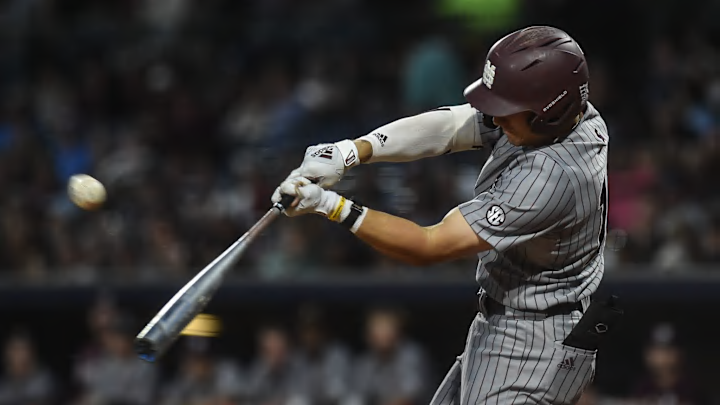Travis Honeyman
Travis Honeyman is an outfielder out of Boston College. While a shoulder injury partially hampered his season, Honeyman turned in strong results in his third season. But his high-contact/average-power profile could make for an interesting player come draft day.
Honeyman is batting .304/.383/.534 throughout 183 plate appearances. Although he's only 6'2", 190 pounds, Honeyman has started to tap into his raw power and launched six dingers. He also had an isolated slugging percentage of .230. Honeyman's in-game power has been trending in the right direction, but his ability to avoid strikeouts and make contact is his biggest strength.
Honeyman has only gone down on strike three in 11.5% of his plate appearances. In 2022, he struck out less than 10% of the time (8.7%). He's an aggressive hitter who puts a heavy emphasis on making contact, which comes at the cost of his walk rate. Honeyman's 7.1% walk rate is an improvement from 2022, though it is still low, all things considered. Though he does have some problems with the high heat, given his swing.
While he isn't the fastest player in the draft, Honeyman is an above-average runner. He was able to swipe ten bases in 11 attempts and has a chance to be a center fielder. Honeyman spent the 2023 season in right field, where his glove plays better. According to Baseball America, his route running was on the inefficient side, which could be the difference between him becoming a center fielder or sticking in an outfield corner.
One thing that will likely grab the attention of the Pirates is his performance in the Cape Cod League. Honeyman batted .289/.400/.530 with four home runs, eight walks, and 18 strikeouts in 100 plate appearances. Notably, Honeyman played all but one game on center field in the Cape.
Honeyman's blend of a hit tool with average to slightly above average raw power makes him a potential outfield draft prospect to keep an eye on come draft time. The right-handed batter has the potential to be a .280 batter who cranks out 15 home runs on a near-annual basis. His fielding and work at the plate still needs some polish, but the tools and ability are there.
